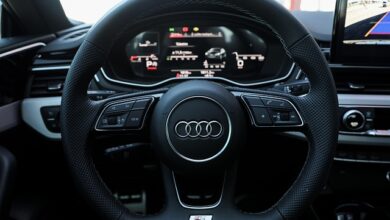What to Do After a Car Accident in Luxembourg: A Step-by-Step Guide

Being involved in a car accident can be a stressful and overwhelming experience, especially if you’re unfamiliar with the local procedures. In Luxembourg, there are specific steps you must follow to ensure your safety, comply with legal requirements, and facilitate the claims process. This step-by-step guide will walk you through what to do after a car accident in Luxembourg, helping you navigate the situation calmly and effectively.
Step 1: Ensure Safety First
The immediate priority after any car accident is ensuring the safety of everyone involved.
- Stop Your Vehicle: If you’re involved in an accident, you are legally required to stop immediately. Failing to do so could result in criminal charges.
- Turn on Hazard Lights: Activate your hazard lights to warn other drivers and prevent further accidents.
- Move to a Safe Location: If possible, move your vehicle out of traffic to avoid obstructing the road or causing additional collisions. However, do not move the car if it compromises evidence or poses a risk to others.
- Check for Injuries: Assess yourself, your passengers, and anyone else involved for injuries. Call emergency services (112) if anyone requires medical attention.
Step 2: Notify Authorities
In Luxembourg, reporting a car accident to the police is mandatory under certain circumstances:
- When to Call the Police:
- If there are injuries or fatalities.
- If the other driver refuses to exchange information or flees the scene.
- If the damage exceeds €1,000.
- If the accident occurs on a highway or major road.
- How to Report:
- Dial 112 for emergencies or 113 for non-emergency police assistance.
- Provide details about the location, nature of the accident, and any injuries.
The police will document the incident and create an official report, which may be required by your insurance company.
Step 3: Exchange Information
Even if the police are involved, you must exchange information with the other parties involved in the accident.
- Details to Collect:
- Names, addresses, and contact numbers of all drivers and witnesses.
- Vehicle registration numbers and insurance details (including policy numbers).
- Driver’s license information.
- Take Photos: Document the scene by taking clear photos of:
- Vehicle damage.
- License plates.
- Road conditions and surrounding environment.
- Any visible injuries.
These records will serve as valuable evidence during the claims process.
Step 4: Complete the European Accident Statement (Constat Amiable)
In Luxembourg, as in most EU countries, you can use the European Accident Statement (Constat Amiable ) to simplify the claims process. This standardized form is recognized by insurers across Europe.
- How It Works:
- Both parties fill out the form together, agreeing on the facts of the accident.
- Include details such as date, time, location, weather conditions, and a diagram of the collision.
- Sign the form only if you agree with the information provided.
- Where to Find the Form:
- Most insurance companies provide the form when you purchase a policy.
- You can also download it online or request a copy from your insurer.
If you disagree with the other party’s version of events, do not sign the form. Instead, rely on the police report and other evidence.
Step 5: Notify Your Insurance Company
Reporting the accident to your insurer promptly is crucial, even if you were not at fault.
- Provide Documentation:
- Submit the completed European Accident Statement.
- Share photos, witness statements, and the police report (if applicable).
- Follow Their Instructions: Your insurer may assign a claims adjuster to assess the damage and guide you through the next steps.
- Avoid Admitting Fault: Refrain from admitting liability or making assumptions about who caused the accident until the investigation is complete.
Step 6: Seek Medical Attention (If Needed)
Even if you feel fine immediately after the accident, some injuries—such as whiplash or internal trauma—may not manifest right away.
- Visit a Doctor: Schedule a medical examination to rule out hidden injuries.
- Keep Records: Save all medical reports and receipts related to treatment, as these may be needed for insurance claims.
Step 7: Understand Liability and Compensation
Luxembourg operates under a system of compulsory third-party liability insurance , meaning all drivers must have coverage for damages they cause to others. Here’s how compensation typically works:
- Fault Determination: The insurer determines liability based on evidence, including the European Accident Statement, police report, and witness accounts.
- Types of Compensation:
- Property Damage: Covers repairs to your vehicle or replacement if totaled.
- Medical Expenses: Reimburses costs for injuries sustained in the accident.
- Lost Income: Compensates for wages lost due to recovery time.
If you disagree with the insurer’s decision, you can dispute it through legal channels or arbitration.
Step 8: File a Claim for Damages
Once liability is established, you can proceed with filing a claim for damages.
- For Minor Accidents: Claims are usually processed quickly, and repairs can begin shortly after approval.
- For Major Accidents: More complex cases may require additional documentation or assessments.
Be patient but proactive in following up with your insurer to ensure timely resolution.
Step 9: Learn About Legal Requirements
Understanding your legal obligations is essential to avoid penalties or complications:
- Mandatory Reporting: Failure to report an accident involving injuries, significant damage, or hit-and-run incidents can lead to fines or prosecution.
- Insurance Validity: Driving without valid insurance in Luxembourg is illegal and can result in severe penalties, including fines and vehicle impoundment.
Step 10: Consider Legal Assistance (If Necessary)
In cases where liability is disputed, injuries are severe, or compensation is insufficient, consulting a lawyer specializing in traffic law may be beneficial.
- Legal Aid: Low-income individuals may qualify for free legal assistance through Luxembourg’s legal aid system (Assistance Judiciaire ).
Additional Tips for Handling Car Accidents in Luxembourg
- Stay Calm and Polite: Avoid confrontations with the other party, as emotions can escalate tensions.
- Know Your Rights: Familiarize yourself with Luxembourg’s traffic laws and insurance regulations beforehand.
- Keep Emergency Contacts Handy: Save your insurer’s helpline number and the local emergency numbers (112 for general emergencies, 113 for police) in your phone.
- Understand Language Options: While French, German, and Luxembourgish are the official languages, many officials and insurers speak English, especially in urban areas.



